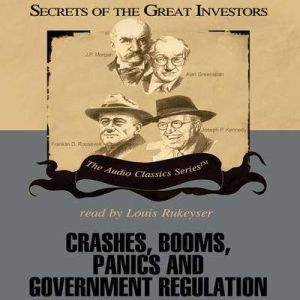
List: $9.95
| Sale: $6.96
Club: $4.97
Crashes, Booms, Panics and Government Regulation
Narrator: Louis Rukeyser
Unabridged: 2 hr 42 min
Format: Digital Audiobook Download
Publisher: Knowledge Products, Inc.
Published: 01/02/2006
Category: Business & Economics
Synopsis
While financial markets sometimes mark time, more often than not they are advancing or correcting. Bull markets eventually are followed by bear interludes; booms; panics; and busts are part of a recurring cycle that marks the course of securities markets. No boom, panic, or bust ever looks exactly like another one, yet most seem to share some attributesand knowing what these are may help you to better follow and understand financial and economic events. Booms are well underway before they are generally recognized. Busts occur quicklyoften in a week or two (or less!). Panics sometimes (but not always) follow a bust; these are dramatic affairs, closely watched, inspiring sentiments of terror and awe. Unless there is a lender of last resort to provide liquidity and restore confidence, panics may be followed by economic depressions. Still, its important to remember that fully accurate and reliable knowledge of such matters is possible only in retrospect: as Will Rogers once remarked, never make predictions, especially about the future. The New Deal was Americas most important reaction to financial and economic turbulence specifically, the Great Crash of 1929 and the Great Depression that followed it. The reforms of the 1930s had longlasting effects, among which were the establishment of the Securities and Exchange Commission (SEC), reform in the governance of the New York Stock Exchange, and the Glass Steagall Act (which separated investment banking from commercial banking, and established Federal Deposit Insurance).